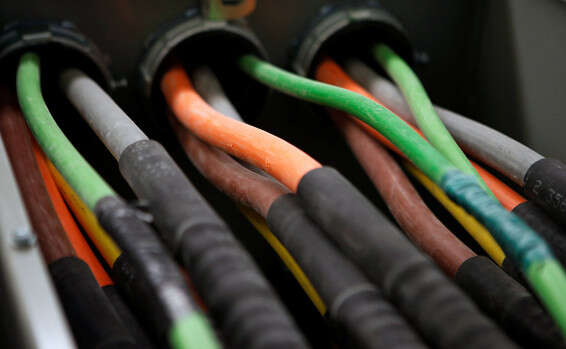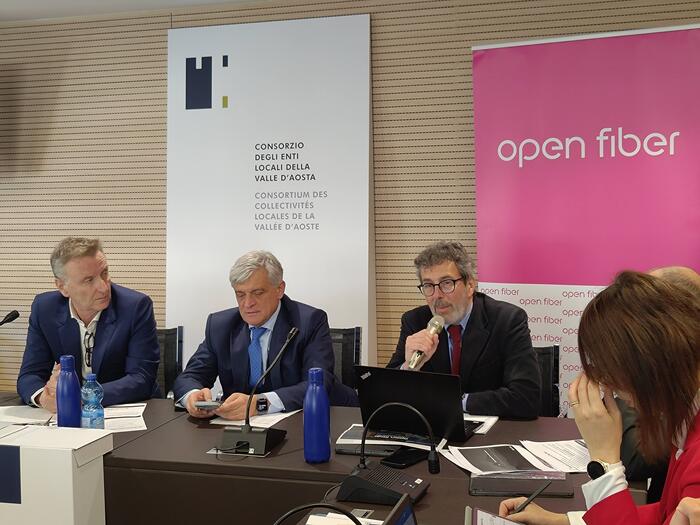The Ministry of Communications is tired of Bezeq's foot dragging, and it has given priority to competition in layout in residential homes • Bezeq: "unreasonable discrimination"
The piping is bursting. Collection of fiber optic cables in a Manhattan server room // Illustrative photo: Reuters
In an attempt to resolve the complexity of preventing massive fiber optics for high-speed Internet communications, the Communications Ministry issued a hearing to telecommunications companies on Monday to determine the obligation of sharing fiber-optic infrastructure within residential buildings.
Bezeq deployed thousands of miles of fiber optics across the country, but did not operate them in residential buildings because the communications ministry refused to commit to a "regulatory horizon" that would allow it to repay billions of shekels.
As a result, Bezeq's fiber network, although paved, is inactive (ie, dark, professional jargon), while the two competitors, Partner and Cellcom (which bought IBC, which was also known as the Electric Company), began to deploy their own networks, In some cases, the fibers are deployed in those buildings to which the Bezeq optical fiber has already been paved. On the other hand - there are buildings to which the three companies' fibers came, when in fact there is no coordination between them.
The piping is bursting
The bottleneck today is the layout inside the buildings from the main media closet, to the floors and all the apartments. The average cost of layout is about NIS 300 to NIS 400 per apartment. The internal layout and networking of the entire fiber-optic building involves both considerable costs and logistical complexity since the layout is done in parallel with the existing copper cables in the building, which were deployed at the time of construction, and involves placing racks in the lobby and every living room, as well as a dedicated optical cable, which will have a dedicated optical cable, Fiber optic for the residential dwellings in dense and bursting plumbing from existing lumber.
At the hearing, the Ministry of Communications states that the new layout will only apply to new buildings, which have not yet been deployed by one of the operators. In these buildings, the deployment will be funded in cooperation between the operators who want access to the building, but Partner and Cellcom will not be required by Bezeq to allow access to infrastructure in the buildings they have already deployed. Bezeq, on the other hand, will be obliged to allow other operators access to infrastructure in buildings where the fiber network has already been deployed, as a counterweight to its refusal to turn on its network and begin service to date.
Bezeq's fiber project is estimated at NIS 3 billion in the inter-ministerial team recommendations made public. The regulation that will allow joint use of the fiber optic infrastructure that is interpreted in existing buildings will allow for double investment in labor inputs and, moreover, to overcome the logistical barriers and public nuisance to the occupants of the building involved in the work.
The ministry claims that the regulation will allow telecommunications companies to avoid double deployment, reduce costs, and remove logistical barriers to the deployment of fiber-optic infrastructure in existing residential buildings in Israel. The labor costs of connecting residential apartments to fiber are significant and complex due to the great variation in the pipelines and cabinets previously installed.
Bezeq response
Bezeq said in response: "Bezeq has consistently supported a logical arrangement that would result in the deployment of only one vertical fiber infrastructure in each building. Unfortunately, the policy document published for the hearing generates abusive and irrational discrimination in that it completely misunderstands buildings where infrastructure has already been deployed. As stated in the hearing documents - dual deployment generates excess and unnecessary cost, this is true for both existing and new buildings, and we hope and believe that the Ministry of Communications will make a decision to share full, equitable and fair fiber and infrastructure in buildings where infrastructure has already been deployed as well as new infrastructure.















